A bitter blustery day on Moel Famau
18th April 2021Though there were plenty of things on my mind, like executing my next career moves at the end of a long break, times certainly were simpler in February 2018 than they are now. Personal income was reduced heavily but I also controlled expenditure far better. Also, time largely was my own so I could pop out on day trips whenever the weather allowed, so a sunny day was enough to lure me to Moel Famau, a place on which I had designs for more than a decade. A weekday excursion allowed for better public transport options so the previous stymied trip idea became a real outing.
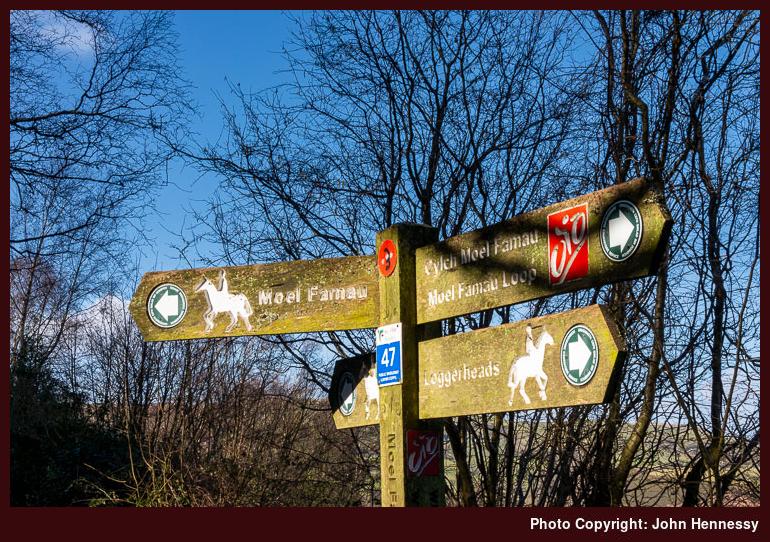
Ironically, the trip that never happened was inspired by a bus timetable leaflet then produced by the now defunct Cheshire County Council. Instead, I was to encounter other parts of the Clwydian Range on a hike from Denbigh to Ruthin and on another that carried me from Llangollen to Wrexham when Ruthin seemed too far to reach that Sunday evening. Belatedly after those, I was not only to encounter the Clwydian Range but actually potter along part of its length.
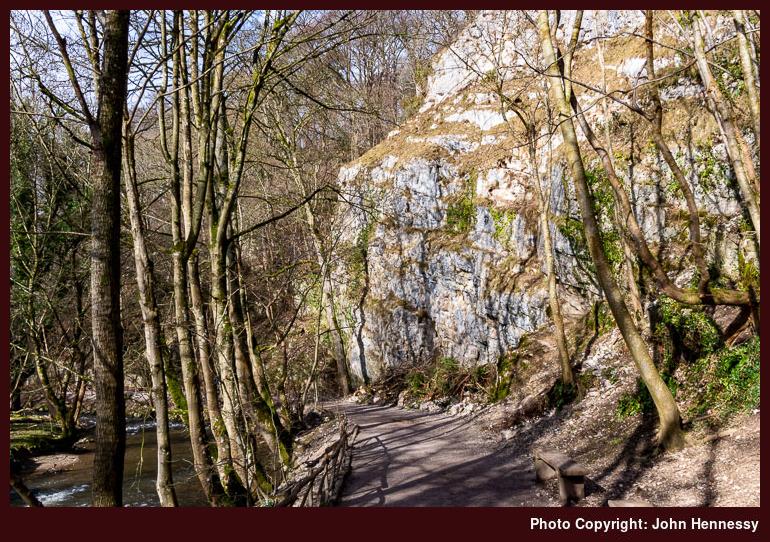
My timing also coincided with a school midterm break and Loggerheads Country Park had attracted families, but simply continuing on my way was enough to leave them after me. Given that there were many other spots that granted me more in the way of the solitude that I so relished, that was just as well. To get closer to those, I just followed the River Alyn as it flowed past limestone outcrops and was completely unaware that, behind them, most of the hill of Cefn Mawr was eaten up by a quarry. It just goes to show, that even in Wales, limestone country can hide such a thing.
The full revelation of the extent of scarring left on the landscape by Cefn Mawr Quarry needed some height gain and that was ahead of me if I wanted to reach the top of Moel Famau. Before that though, I remained by the banks of the River Alyn until I left the track to cross the river and some muddy fields to reach Bryn Alyn. There was a road-based route that would have taken me around by Bryn y Castell but I fancied keeping that to a minimum at this stage, possibly a good idea since so much tarmac travel was to occupy the end of the day’s walking.
Nevertheless, continuing uphill from Bryn Ayn on a minor road was needed to get me onto a bridleway that would round Ffrith Mountain and get me most of the way to Moel Famau. As I continued along the track, height was gained all the way and views of the surrounding landscape opened out before me. Much was pastoral and the size of Cefn Mawr Quarry became more and more apparent; most of the hill seemed to be gone!
Leaving sights of environmental sacrilege after me, I rounded the boundary of Clwyd Forest to reach the summit that I was seeking. While the bridleway got me most of the way there, I left it to make the final approach to the Jubilee Tower. As if to remind me of the season, a brief flurry of snow came upon me, but the lasting impression is of the stiff and bitterly cold wind that blew along the ridge.
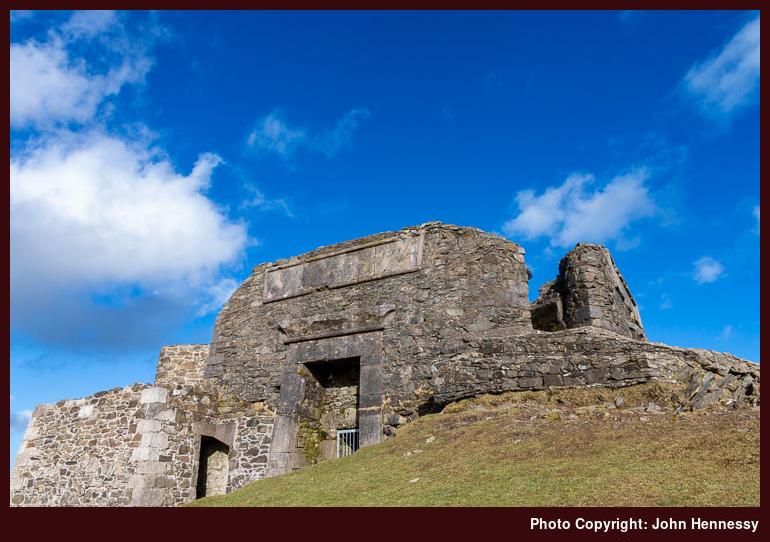
That did not deter me or the others who were there, but this was not a day for lingering, especially with a wind that could knock you. Still, the tower dating from the reign of Queen Victoria was explored before I started to descend along Offa’s Dyke Path. Conditions underfoot were greasy enough for walking poles to prove unable to halt a muddy tumble. After that, more careful travel was in order, yet my sure-footedness was not guaranteed even then.
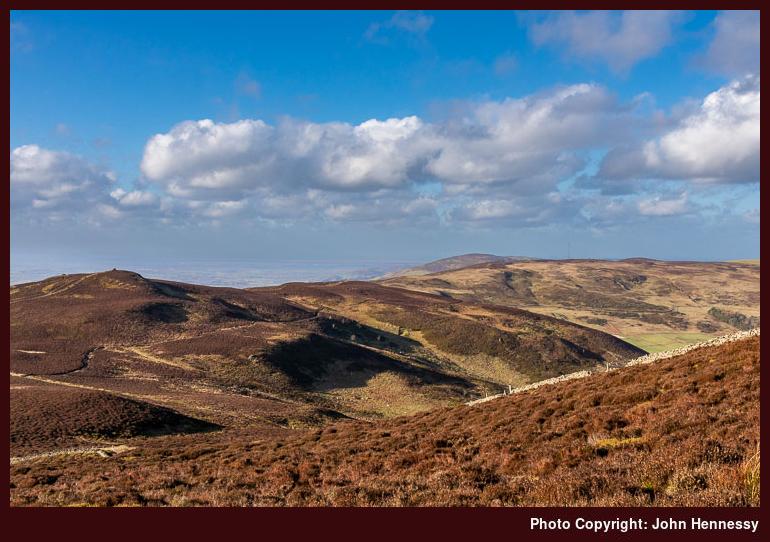
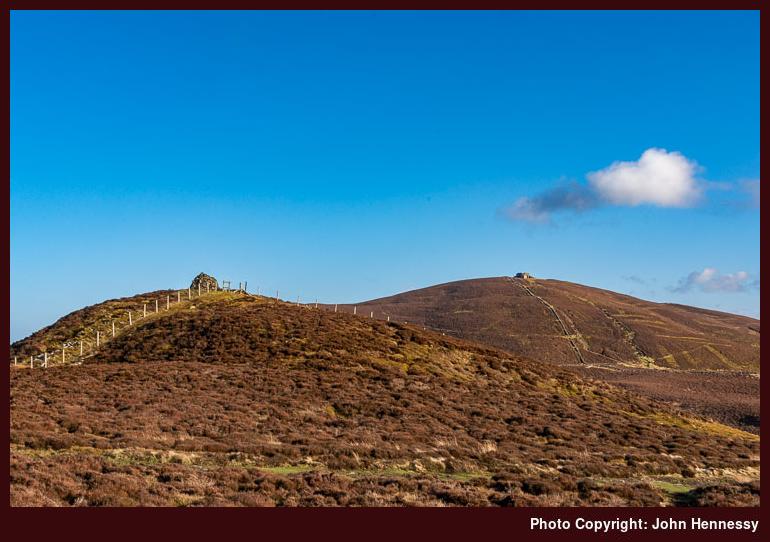
Even with plains abutting the eastern and western edges of the chain of hills, it still was possible to make images that could make one believe that it was more extensive than it was. There was so much scope for that choosing photos for this trip report was an exercise in itself. All the while, the afternoon was edging towards its end so I needed to think about getting to Mold before it got too dark. Before that, I had plenty of moments full of uninterrupted quiet and had ensured that by continuing from Moel Famau to Moel Dywyll after seeing a sizeable group of walkers taking a route that I might have taken. Peaceful wandering was what I sought and there was plenty of that so it often does no harm to let others decide some things for you.
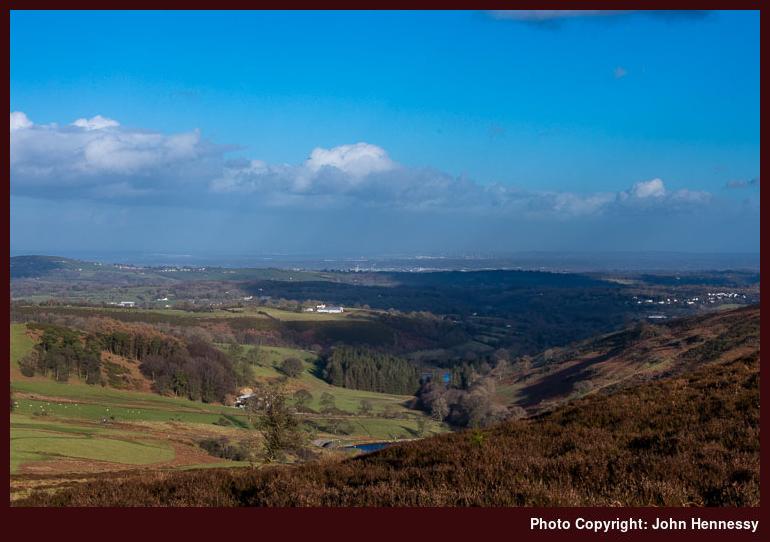
After Moel Dywyll, I found the bridleway that started me on my descent. However, greasy ground turned out to be my undoing as I endured my second muddy stumble of the day. That caused some muttering about my falling into a somewhat carefree mood, but this was the last of these and I continued on my way without anyone seeing my blundering and with added care in spite of the alluring late evening sunshine. The shelter afforded by the valley was all the more appreciated as I passed Garth and two reservoirs on my way to Pentre.
While a side-trip to Cilcain tempted me, weary limbs and declining light informed my decision to follow a stream-side public footpath by Nain Gain instead. After that, it was road walking all the way to Mold’s bus station. Along the way, there was another crossing of the River Ayn and I passed such smaller places as Pontnewydd, Pantymwyn, Gwernaffield and Pant-glas. Light really was fading by then but I got within the street-lighting area in good time and reached the bus station as I hoped, so my journey home started after a satisfying day in the hills laden with soothing quieter moments.
Travel Arrangements
Return train journey between Macclesfield and Chester. Bus service X1 from Chester to Loggerheads where my walk started and, when It ended in Mold, bus service 4 was used to get from there back to Chester train station.
Preoccupations
11th April 2021Though it has been quiet on here over the last few months and COVID-19 restrictions complement the wait for vaccination, I have managed to get out for some local wandering. Some of the walks necessarily have not been of much note but there have been deeper incursions into nearby hill country too when time and weather allowed. Even the threat of wintry weather was not enough at times.
One outing took me to the top of Croker Hill via Langley before returning via Bosley, North Rode and Gawsworth. That was at the end of February when a sunny Saturday was on offer for a long day out that started from my own doorstep. Having some time off around Easter allowed for more like this with Shining Tor and Shutlingsloe acting as fulcrums for to six hour hikes, again without recourse to any motorised transport whatsoever. Tegg’s Nose Country Park and Dane’s Moss Nature Reserve saw visits too, which all helped for getting out in fresh air to burn off fat gained over the winter.
That I got engrossed in learning new computing languages probably helped me to pass the time though that did no favours when it came to keeping up the amount of physical activity. My hope is that the arrival of longer evenings and the presence of spring followed by the coming of summer will help me to get further afield subject to any restrictions brought on us by the ongoing pandemic. Like last year, we all only have to see how things proceed.
A frosty February day spent around Rothbury
26th September 2020Photographic equipment errors can blight subsequent results. For instance, this summer saw me using a camera at a different ISO setting to what was intended and I did not notice it for weeks. Given that the setting was 320 rather than the desired 400 and I have often mulled over the idea of using 200, it was not a calamity given that I create raw image files anyway.
What reminds me of the above is that a more obvious mishap beset the photos made on the trip described in this report. That time, I somehow knocked the camera into the wrong daylight balance setting. All the images came out far too red but creating raw image files allowed for a rescue in Adobe Photoshop Lightroom. Being able to bulk copy the new settings was a real bonus so I could ameliorate any annoyance in the act and leave the lesson on file for future reference.
Given I finally had got to Rothbury after having designs on such a trip for what seemed light an age, the easy fix to those photos probably was just as well. Just like the North York Moors that were featured in an earlier post, this too was a long way to travel for a day trip, though that never stopped me getting to other parts of Northumberland since they are afflicted by the same disadvantage.
Rothbury was reached later in the same week as an icy encounter with Roseberry Topping. The chance of a bright day added to the required motivation input even after an outdoors escapade earlier in the week, especially since an early morning start was needed. It also was good timing for travel by double-decker bus for the last part of the inbound journey.
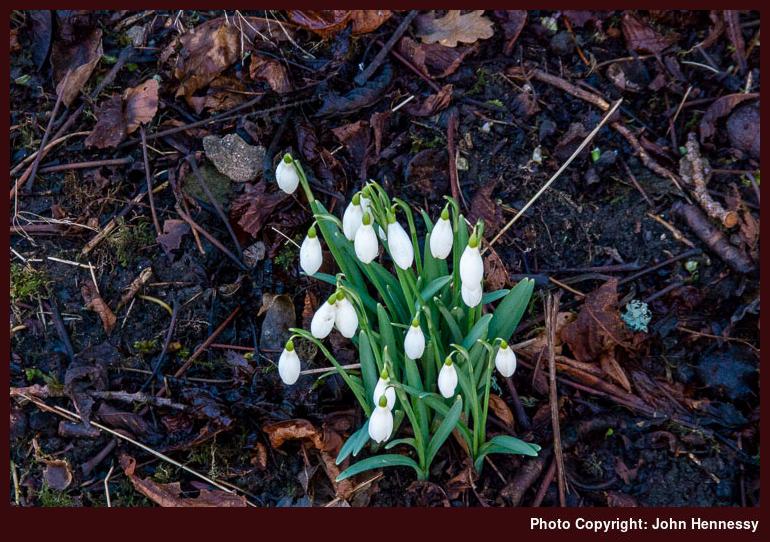
Though Newcastle was dull while I was passing through the city, Rothbury was bright and sunny with clear blue skies overhead when I arrived there. My intended walking target was Simonside so I soon left by way of St. Oswald’s Way to make the most of the time that I had. The day may have been laden with wintery crispness but I was to pass a harbinger of spring once I passed Whitton: snowdrops.
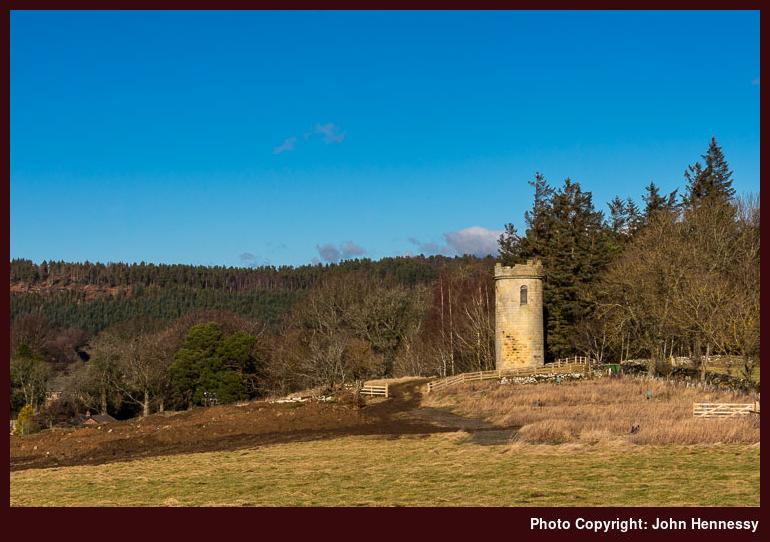
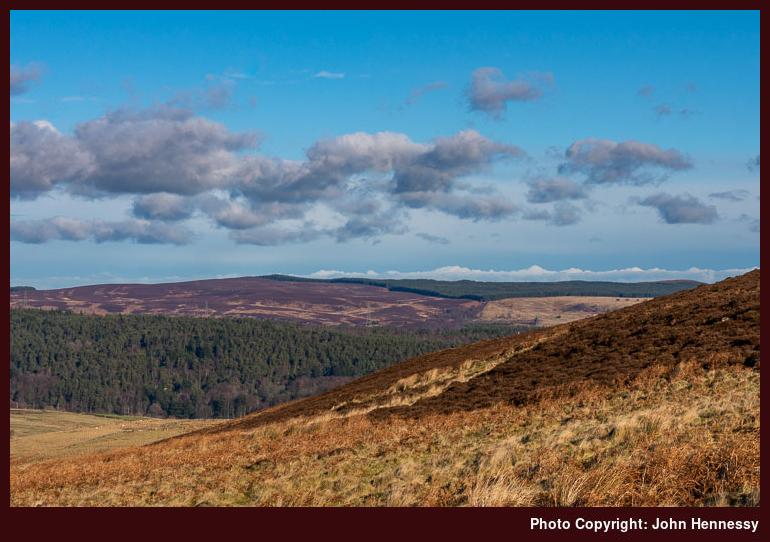
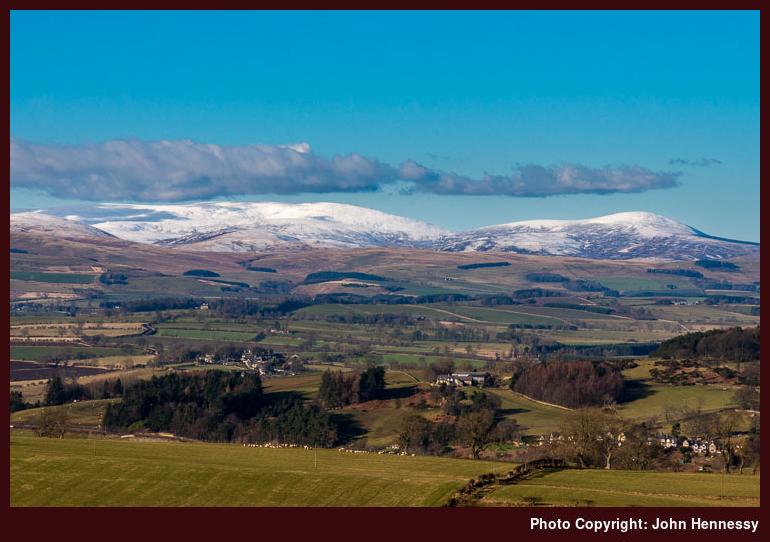
After passing Sharpe’s Folly on my way towards Hillhead Road, the surrounding views opened as I followed the track with height being gained as I did so. Though looking to my left brought my eyes towards pleasing sights, it was what lay to my right that captivated my attention at various points throughout the day. The white-topped summits of the Cheviots not only acted as a reminder of winter but also contrasted against the otherwise green landscape bedecked with some brown patches.
The track was left to reach Whittondean and going beyond that took me onto open moorland. Handily given that I was crossing soggy bogland, the path was paved. All the age of my map was plain to see so it was just as well that I had the OS Maps app on my phone for adding the extra details. Quite why I had not got around to buying a newer paper map is lost to me but it would have added the route of St. Oswald’s Way for one thing.
At that time, thoughts of depending on a phone app given the vagaries of signal and battery life felt imprudently trusting. Still, it all held together on the day and even showed another public footpath over Simonside that itself came in being after 2005, the publication date of my Explorer map. Since then, I have chosen phones with lengthy battery life and they came into their own during this year’s travails when they allowed me to leave paper maps at home for various local day hikes where I largely know the lie of the land anyway. Still, I am mindful that the phone is doing the locating so I need not lose that ability for myself in case I ever need it again. After all, devices are not that infallible.
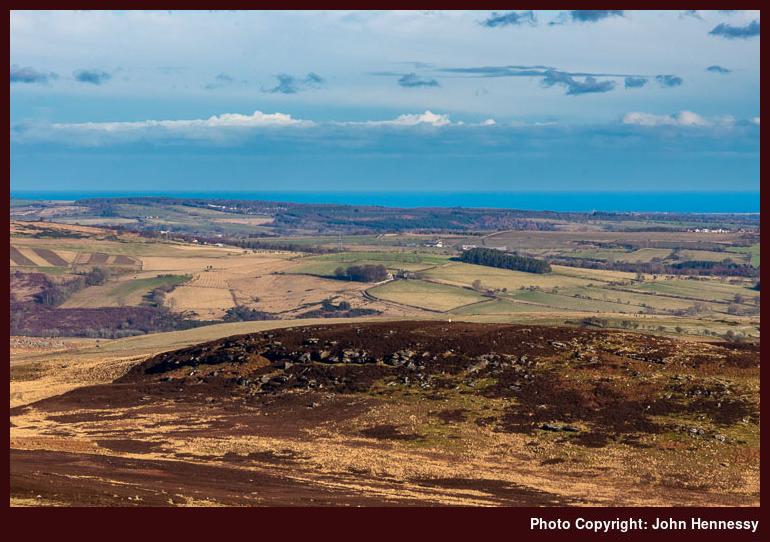
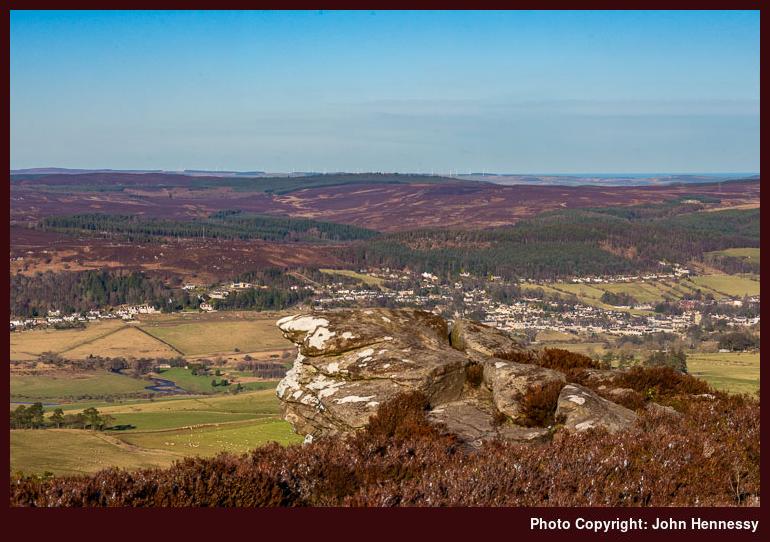
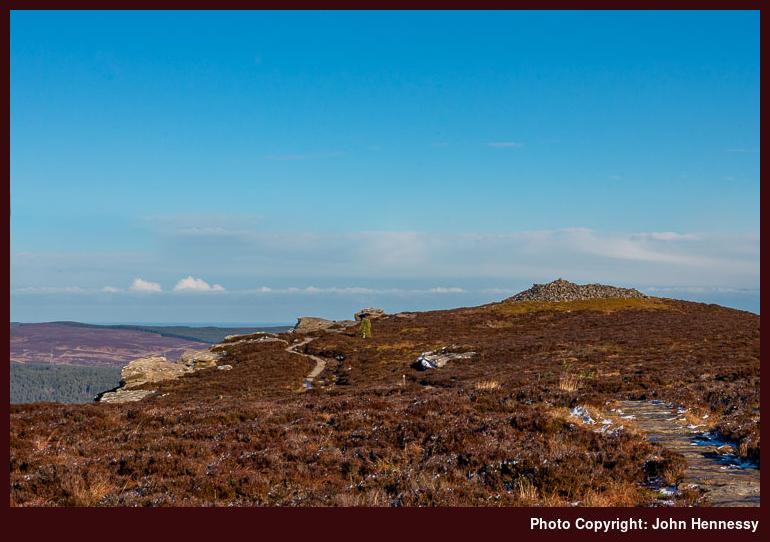
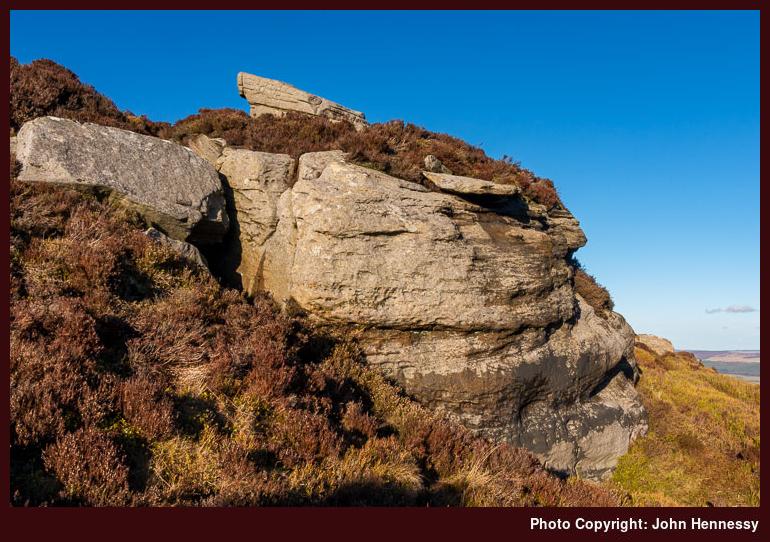
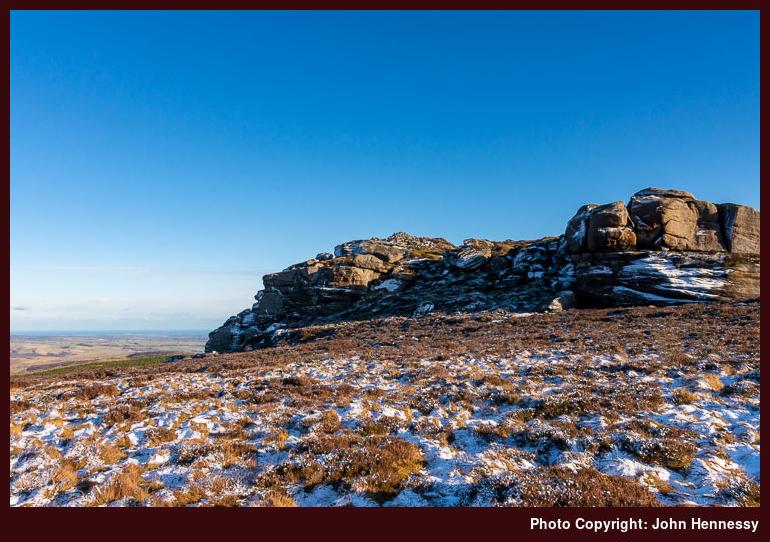
A relatively timely arrival at the eastern end of the Simonside ridge added a certain complacency about route timing that soon got dispelled by the false summits that I met along the way. The whole section may have been around three kilometres in length, but the afternoon passed as I pottered from east to west, especially given the arresting views that lay all around me. Winter whitening of various sections and the presence of icy patches added to the need to concentrate on what was at hand. That really applied to the steep western descent from the actual summit itself.
By then, it was late afternoon and I needed to catch a bus at a certain time too. Even with this and with others going the way, I was not going to rush, but any coated patches were left after me soon enough along with any gathering of humanity. Then, it was a matter of descending through forestry to Great Tosson, an act greatly aided by the use of walking poles to speed things though there was ample time to survey the surrounding scenery as well.
From Great Tosson, there was a road descent to Newtown, after which a byway returned me to the banks of the River Coquet. Once across to the other side, I was bound for the bridleway taking me back to Rothbury again. That the sun continued to lower in the sky caused no concern given the progress that I was making. A lost time had been made up again without the need for rushing; it was all a matter of maintaining a steady if unhurried pace while relishing what lay about me.
In fact, there was enough time before my bus came to visit a shop for some provisions and a new map of the area. After that, my journey home began and I could wonder about returning to Coquetdale. Though current circumstances may delay that, I still have spied a possible route taking in Cartington Hill and the Cragside Estate. Having an excuse to revisit a place never is a bad thing to have.
Travel Arrangements
Return train journey between Macclesfield and Newcastle extended by a return bus journey on route X14 between Newcastle and Rothbury.
Same month, two consecutive years, two very different seasons
28th August 2020During July, I read Barry Lopez’s Horizon and its prose has the same elegance and attention to description that I enjoyed when reading Arctic Dreams, one of his earlier works. The main reason that I mention summer 2020 reading here is that it mentions the explorer Captain James Cook and this trip report includes two different excursions into countryside that he would have known well. After all, he had his upbringing in Great Ayton that was the start and end point for two very distinct walks.
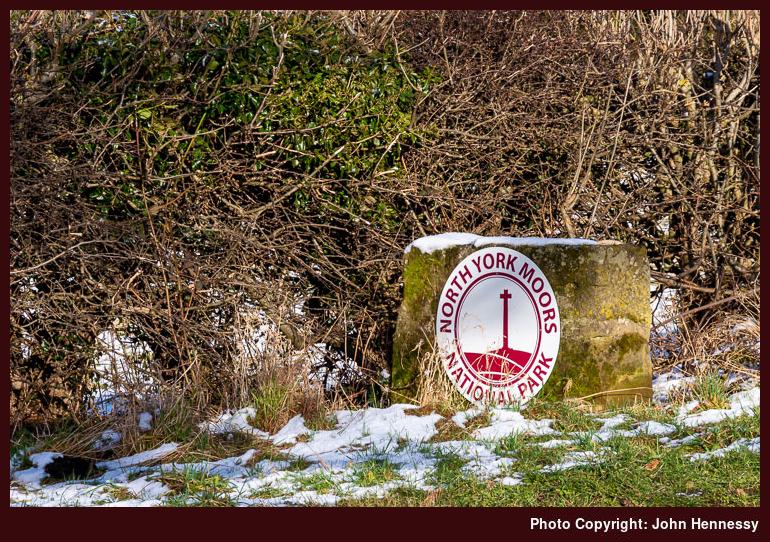
It was not so much the routes that differed but the weather and ground conditions. The first encounter was on a wintry Wednesday in 2018 while the second was on a summer-like Saturday with many more about since it also was during a school midterm break. In fact, the weather drew many to travel by train to Whitby and it was a mild if greyer day spent there that took me past Roseberry Topping and Great Ayton in the first place.
Preceding Reconnaissance
The North York Moors have lain beyond the extent of north of England hill wandering for a long time before I made an actual incursion. Part of this is because getting to the North York Moors is a little awkward from where I live, especially for a day trip. For one thing, train travel takes quite a while and that especially applies to the Esk Valley railway line, scenic though it is. After all, it takes a few hours to get from Middlesbrough to Whitby and service frequency is of the order of number of trains per day rather than number of trains per day. As it happens, bus travel from Leeds can work just as well so that probably is saying something.
Given that, it perhaps is unsurprising that I undertook a reconnaissance visit before undertaking anything more intensive. That was how I got to go to Whitby on the Wednesday before Christmas 2017 and looking back at photos made then surprises me for I was a lot luckier with sunny spells than I then had supposed.
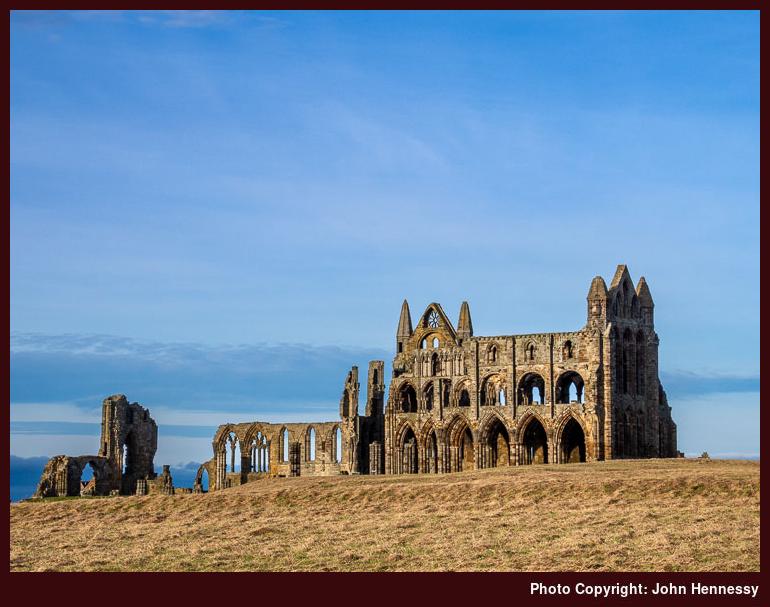

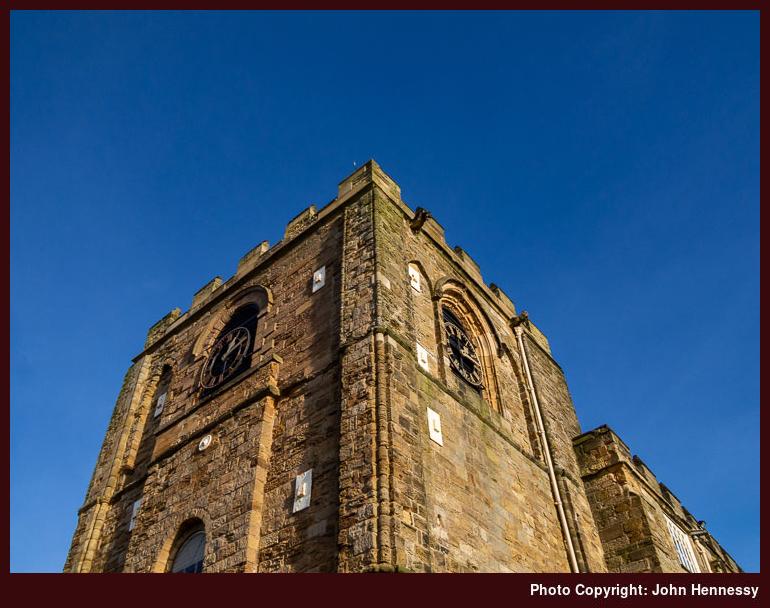
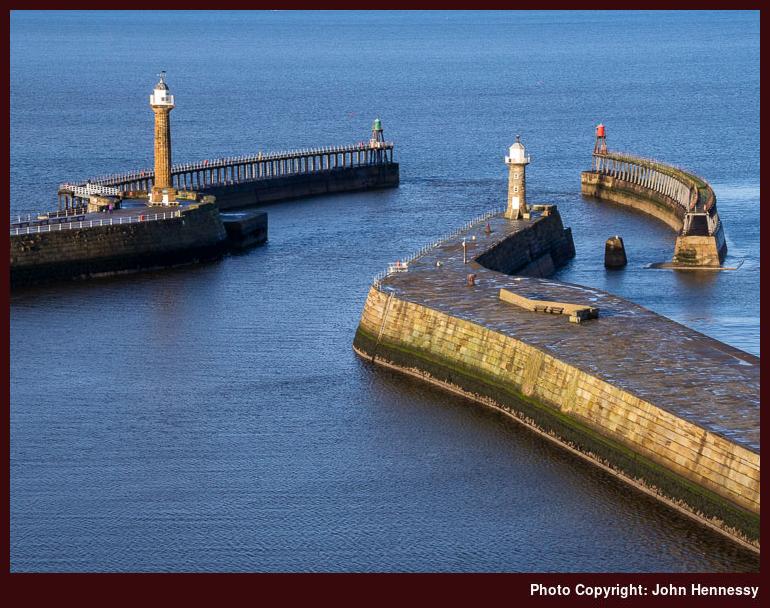
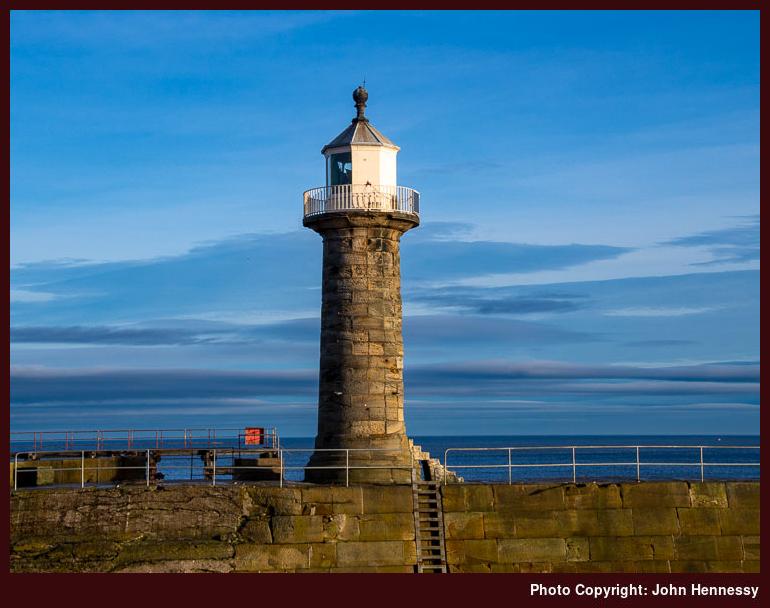
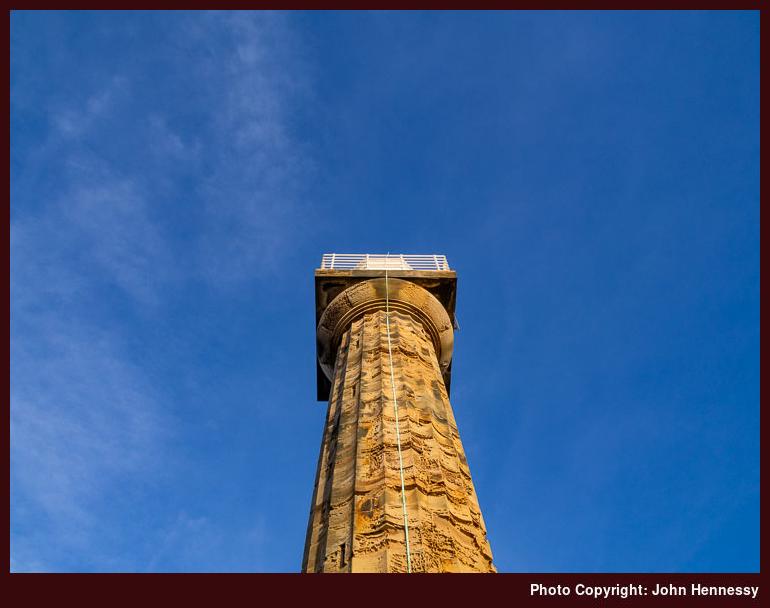
When I reached Whitby after savouring the scenery along the way from Middlesbrough, I naturally got to potter about the place to get a closer look at the ruins of its abbey and anything else that caught my eye while I was there. There even was a bit of coastal walking and a chance to dip my footwear in the incoming waves of the North Sea.
Not wanting to await the next train to Middlesbrough, I caught a bus to Leeds from where I started my train journey home again. Sitting in the top deck of that double-decker meant that I spent more time looking at what lay about me on the way than progressing with any reading material that I brought with me. After all, I was getting to see places where I had not been and that was the point of my outing. It duly achieved its purpose and the possibility of a walking incursion into the North York Moors became all the more real.
True Winter
That I only got to glimpse Roseberry Topping in reality during my 2017 reconnaissance trip might make you think that I may not have known of the hill for very long, but that is not the case at all. After all, the photographic craftsmanship of Joe Cornish is something that I have appreciated for nearly two decades and this has been one of his favourite subjects. More recently, I got to know that it is a local hill for world-class mountaineer Alan Hinkes.
It also is low in stature and near a train station once you get there, so that made visiting it on a day trip more realisable than other parts of the North York Moors. That made it a plausible option when I desired a short afternoon stroll even when cold weather was forecast. It also helped that I could add to the route, thus gaining a wider appreciation of the area.
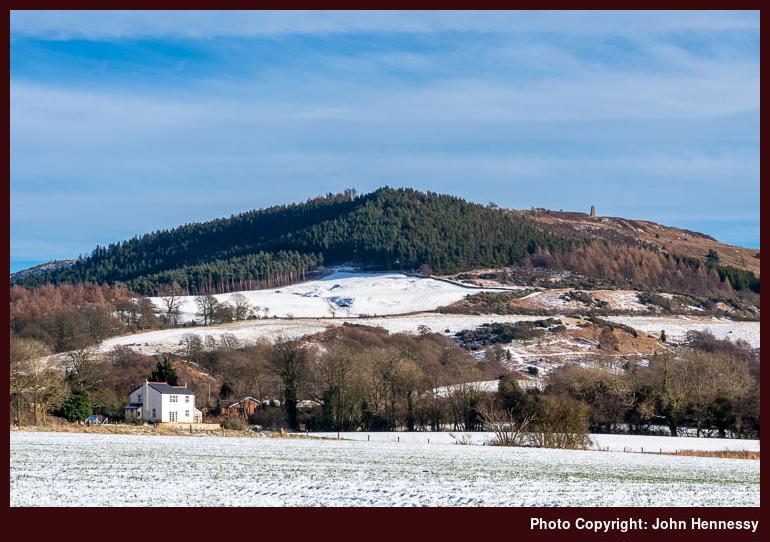
On arrival at Great Ayton by bus, I was greeted by bright sunshine and the frigid forecast proved to be correct with a thin coating of snow and many icy patches that required extra care as I went. The village looked well in the sun as I left it to go via the train station to Great Ayton Moor accompanied by views of the Captain Cook Monument on Easby Moor. The folly of thinking that going by bus would give me more time was exposed by the arrival of a train from Middlesbrough as I passed on the bridge over the station. It was only later when I needed to await a bus after missing a train that any wisdom such be extracted from the approach.
Nevertheless, I continued along Dikes Lane before leaving it for a public footpath near Gribdale Terrace. It may have been how icy the road had been that encouraged such a choice, especially with my going uphill. In time, I would meet with the Cleveland Way for the next part of my hike.
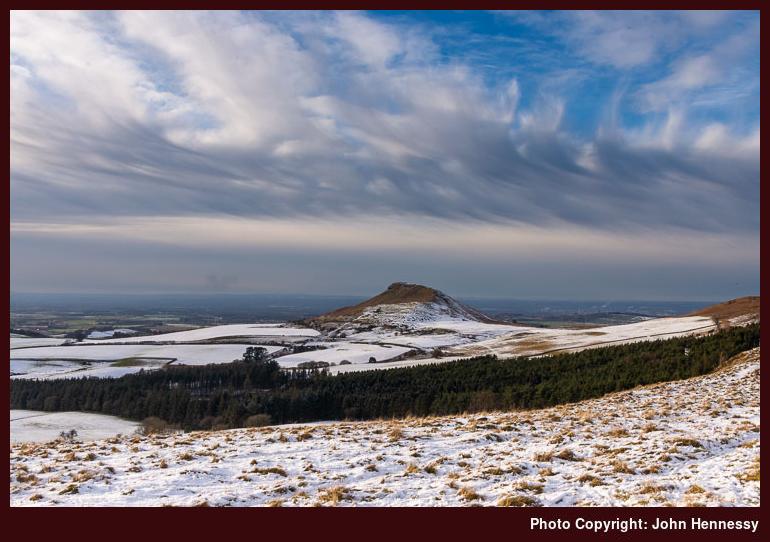
That was to lead me over Great Ayton Moor and Newton Moor while previously clear blue skies became filled with cloud cover. There were few others about so I enjoyed more solitary strolling with views opening up around me to include Roseberry Topping itself. The Cleveland Way does include the aforementioned hill as a side trip on its way from Helmsley to Filey and that decided the route I would take to reach its summit.
First, I needed to drop down carefully off Newton Moor after passing Slacks Wood. As I did so, I debated the good sense of proceeding with the ascent given the conditions. Looking at the photos since then though, I realise that I missed a trick because not all sides of Roseberry Topping were coated with snow so I could have gone with an alternative route to that which I took. This might have saved reproaches against my stubbornness and coming off a different way might have appeal if I had not scared myself on the way up.
The way down was testing with the prospect of a long slide down steep slopes not appealing to me given the chance of injury. There was a short controlled slide but that only restored confidence rather than causing the feared outcome. It all slowed progress in declining light and I sensibly put aside the possibility of missing a train in preference to risking a more serious slip.
Thankfully, the steepest descent was behind me quickly enough, though I retain a few lessons about looking for a less snow-coated route, having better traction equipment and even leaving a possibility for another time. They were being stored as I continued down to Aireyholme Farm where I met with a tarmac track back to Dikes Lane again. Though I missed the train by a matter of minutes, it was better not to rush and I returned to Great Ayton to await a bus instead. Then, my journey home began.
More like Summer
It was partly a desire to capture a photo of Roseberry Topping in sunnier weather that drew me back to the North York Moors and a February day that felt more like summer offered just that. Added enthusiasm came from the suspension of a Northern Rail strike that meant that no Saturday services had been operated by the company for many months. The train service restoration had the effect of encouraging me to embark on numerous trips to Yorkshire during the spring of 2019.
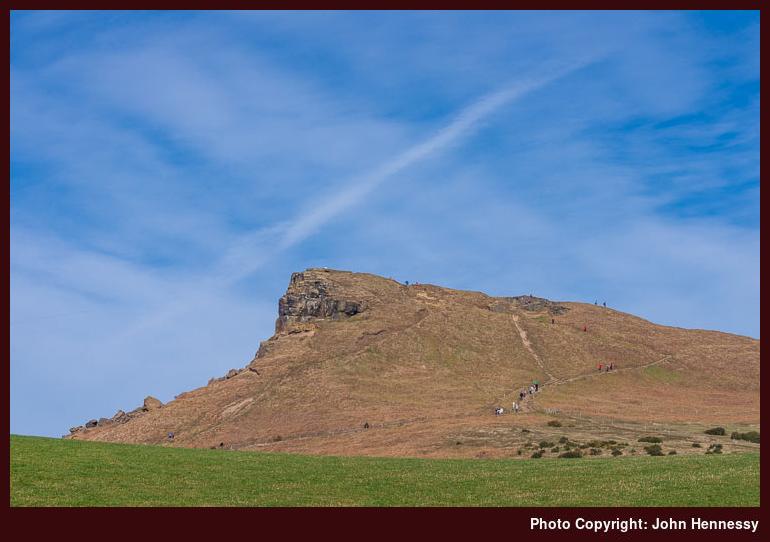
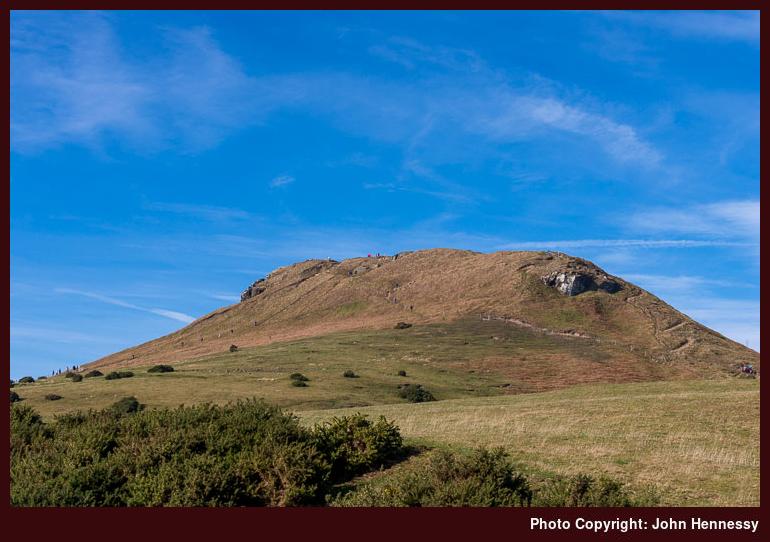
My previous encounter had happened on a wintry Wednesday so it was very quiet with plenty of solitary walking. It was not just the unseasonably mild weather that added company the second time around for this a Saturday during the spring school midterm break too. That almost guaranteed that Roseberry would have plenty of people around, as might be spotted in the photos by careful observers.
The first part of my way up there was quieter though and was a reprise of my previous descent route via Aireyholme Farm. With all of those who were around Roseberry Topping, my call to the summit involved little in the way of delay with some leaving me pass since they were slower than I was. In any event, I was seeking quieter surroundings and it did not take long to find them.
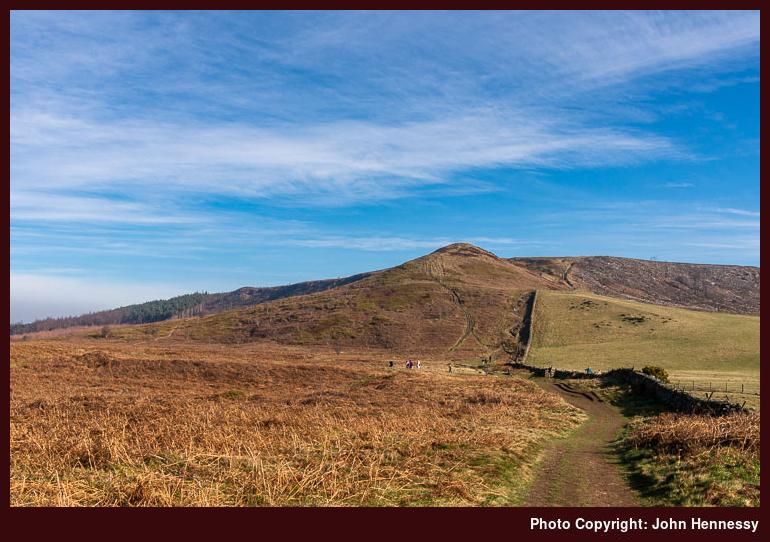
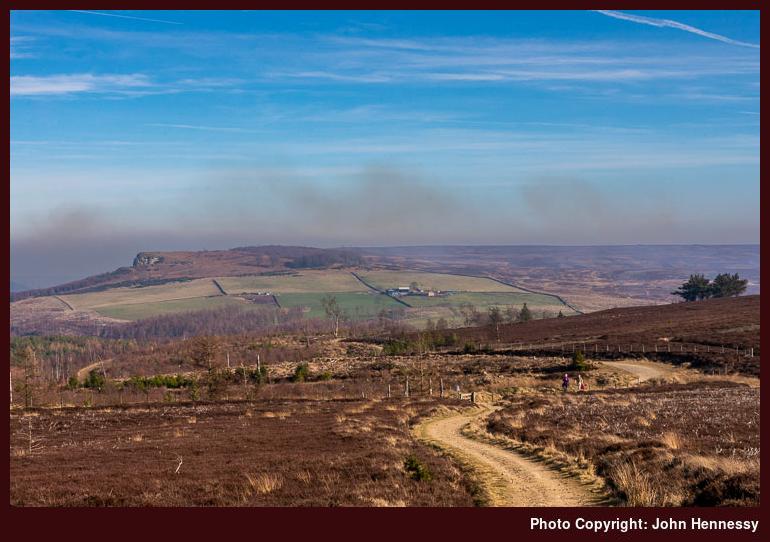
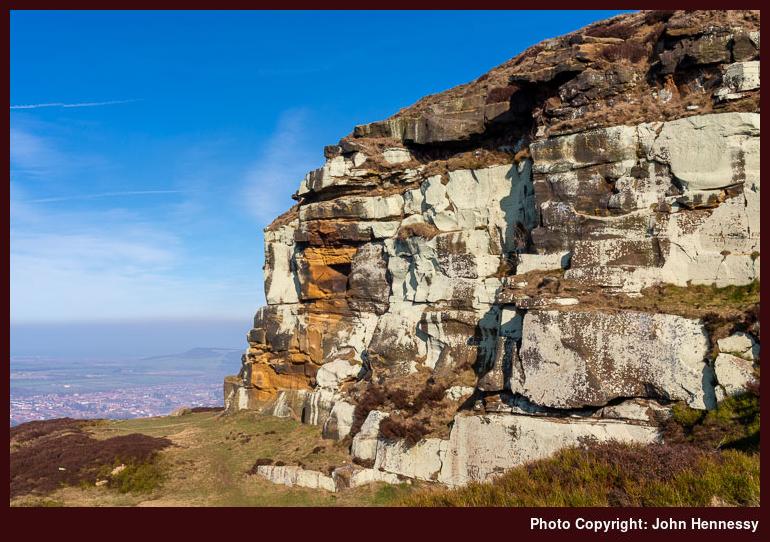
All I needed to do was to go following the Cleveland Way as far as Highcliff Nab. That journey carried me over Newton Moor, Hutton Moor and Black Nab along the way. As I crossed near Hutton Lowcross Woods, the landscape took on something of a desolate quality to my eyes for some reason. The variety of landscapes encountered on the day made sure that I would dwell on such an impression.
The final part of the journey to Highcliff Nab was a simple out and back affair that involved spending a little time around the crag. That said, it did not detain me and others were stationed there already so I started on the next part of my hike. That took me across Codhill Heights and Kildale Moor where I met with a tarmac lane. Then, I doubled back to meet with a path that went across Great Ayton Moor. As I got closer to the car park near Cockshaw Hill, I encountered more people again and there was a certain recognition of where I was since I was going past places that I first saw on my previous visit to the area.
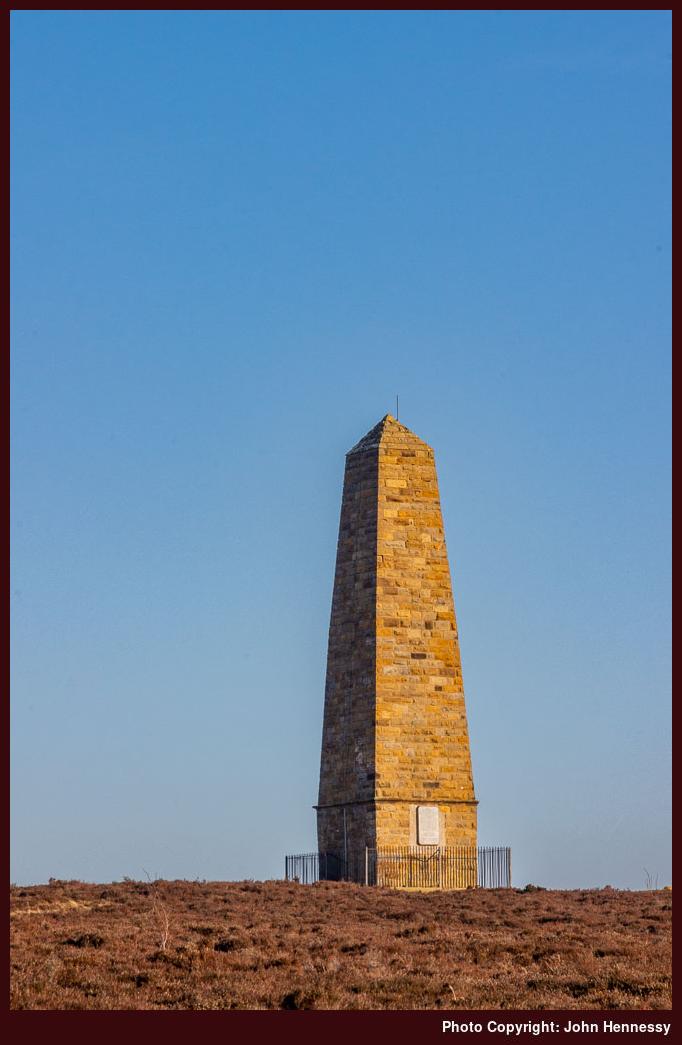
Reaching Captain Cook’s monument was an attraction for quite a few visitors so I needed to share the trail over Cockshaw Hill and Great Ayton Moor to reach the obelisk on Easby Moor. There were still quite interludes though since it was by then later afternoon. After spending some of my own time up there, I continued down to Great Ayton’s train station and gained more solitude along the way. The path down through Ayton Banks Wood was gentle at first but later became steep enough that I resorted to holding on to tree trunks in an effort to steady my nerves. That was behind me soon enough so I trotted along a bridleway and a byway to reach the Dikes Lane and the train station again after a good day of hill wandering. Even so, the possibilities of this area are far from being exhausted and other halts on the Esk Valley Railway may offer additional departure points for future explorations on foot.
Travel Arrangements
Getting to and from Whitby involved an outbound train journey with changes at Manchester and Middlesbrough, while the way back made use of the Coastliner bus service to get from Whitby to York from where I continued back to Macclesfield with a change in Manchester. The first trip to Great Ayton needed a return train journey between Macclesfield and Middlesbrough with a change in Manchester and bus connections were used to get between there and Great Ayton. With changes in Manchester and Middlesbrough, the second journey to Great Ayton was an all-rail affair unlike its predecessors.
Traipsing through two countries and three counties
28th June 2020The start of a new year often is a time for reflection on what has gone before as much as pondering the prospects of a year to come. In this, 2018 was no different and I was in the middle of a career break as well, so the thinking turned to my next career moves and the choices that I arrived at in January 2018 continue to pervade more than two years later.
In fact, they affected the start of this year with another work break that allowed the taking of stock in light of then seemingly pervasive threats. Throughout this, I also got to wonder about future transatlantic excursions as a form of distraction. Many do love planning but you need to not have an intrusive global event to make it happen. So all those dreams from January and February of this year are placed on hold.
Thankfully, it was only my own speed of inquiry and assessment that forestalled any overseas travel dreams in 2018. Other plans could be made to happen in a piecemeal if imperfect manner. What I needed to do is get over the residual stresses caused by what needed doing during 2016. At least, I did not have a global pandemic back and I count myself very fortunate for that.
Returning to 2018 though, it was not as if all the required introspection ruled out day trips quiet like the activities or the weather of the first two months of this year. In fact, a few of those took me to Wales and the principality had not seen my making trips there for quite a while if I recall correctly. The sequence of Welsh outings actually began before Christmas 2017 when I embarked on a trip through the western end of the Brecon Beacons National Park. That took me through Abergavenny and Brecon as far as Neath before I continued my way home. In time, the possibility of exploring another quiet part of Wales may come to something.
My first Welsh excursion of 2018 actually took me to Cardiff, a city that I have long neglected, and the outing was repeated in part on the Spring Bank Holiday of 2019. Then, there may have been a Spice Girls reunion concert but what intruded on my ambling more were posses of cyclists going along multi-use trails. Sunshine pervaded on both visits but thoughts of basing myself in Cardiff for a few days to explore the countryside within its vicinity retain their appeal. While I might do some cycling of my own too, I do intend to leave better space for walkers, especially around the delightful Bute Park and along the banks of the River Taff.
So far, what I am talking about is a spot of reconnaissance that may lead to future trips and there is one other excursion in January 2018 that deserves a mention before the main trip report and it leads easily into it. That took me from Macclesfield to Aberystwyth via Shrewsbury and Llangurig. Not only did that take me past Pumlumon Fawr by bus, but the stopover at Llangurig also allowed some muddy walking along part of the Wye Valley Walk. What I really was exploring though were the logistics of getting near Pumlumon Fawr for an ascent of one of the highest hills in mid-Wales. That left me with the framework for a scheme that either would use Aberystwyth as a base or involve a bivvy on the side of the hill, depending on how brave I feel.
The Wye and Severn rivers both rise on Pumlumon Fawr, yet that was not where my Welsh wandering took me next. It may have featured the same River Wye, but this was a circular ramble with Monmouth at its starting and ending points. In truth, I also fancy a visit to Tintern Abbey but remains outstanding too and the idea for the Monmouth excursion lay in my mind for quite a while before it happened.
Calling the route a circular one does much to hide its actual complexity with some of that arising from serendipity. At my arrival in Monmouth, all that was yet unknown as I passed through it heart with older buildings like those of its church and its independent school adding interest along the way. The school’s students were going hither and thither in their boisterous ways and, fancying an air of greater peace, I left them to those to reach the River Wye.
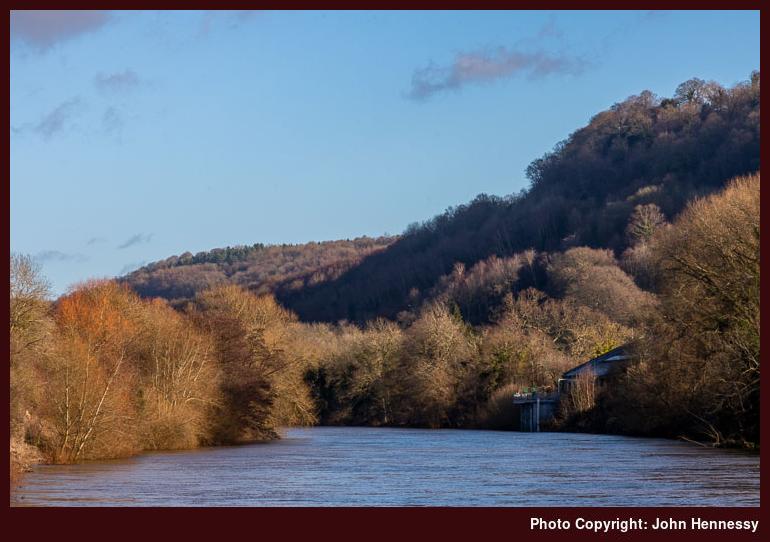
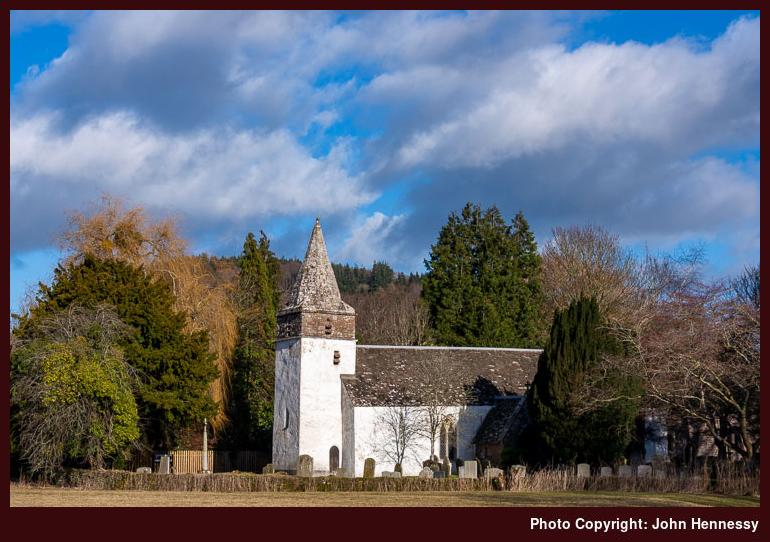
There, I met up with the Wye Valley Walk that was to convey me along the Welsh side of the river; Offa’s Dyke Path also passed hereabouts, but that was not part of my designs since I was bound for Symonds Yat. With the hubbub of the A40 in the background, I relished the sunny morning as much as I could. Apart perhaps from the likes of St. Peter’s Church near Dixton, those early stages were not to be peppered with so much in the way of human construction.
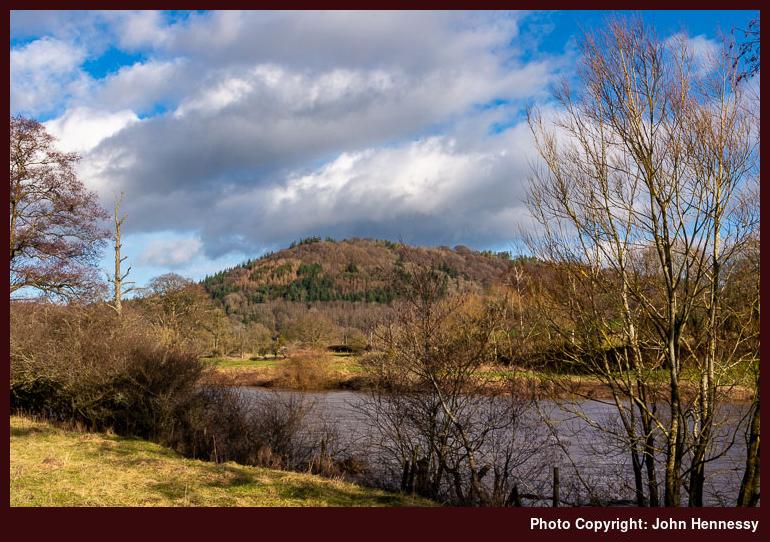
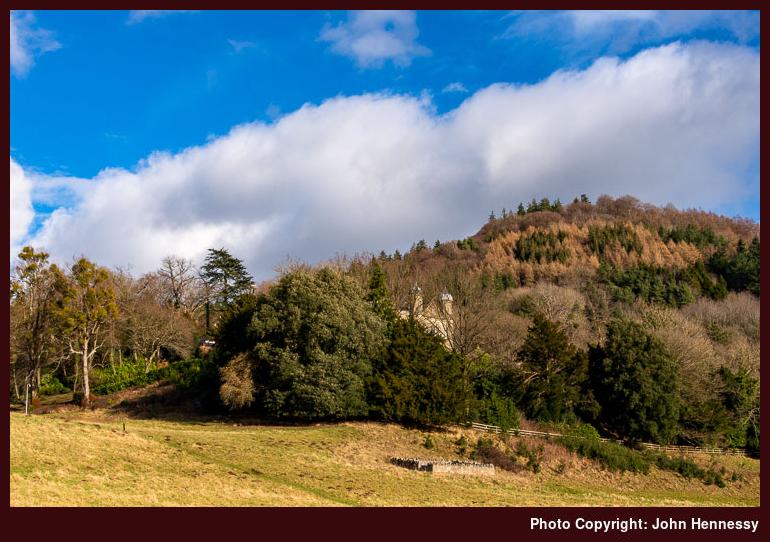
Forested hills lay to my right and in front of me as I went and it was around these that I was to spend much of my time. Some were to be more easily named than others, but that did not detain my thinking as I reached the point where the river parted from the busy motorised thoroughfare. Beyond Wyastone Leys, my surrounding were to become much quieter and much now forested.
The forested route may have limited opportunities for photography but I was soon enough at The Biblins where I would cross the Wye and encounter a greater human presence. Some were walking and others cycling, but there was enough room for all of us and I still recall having the place to myself at times.
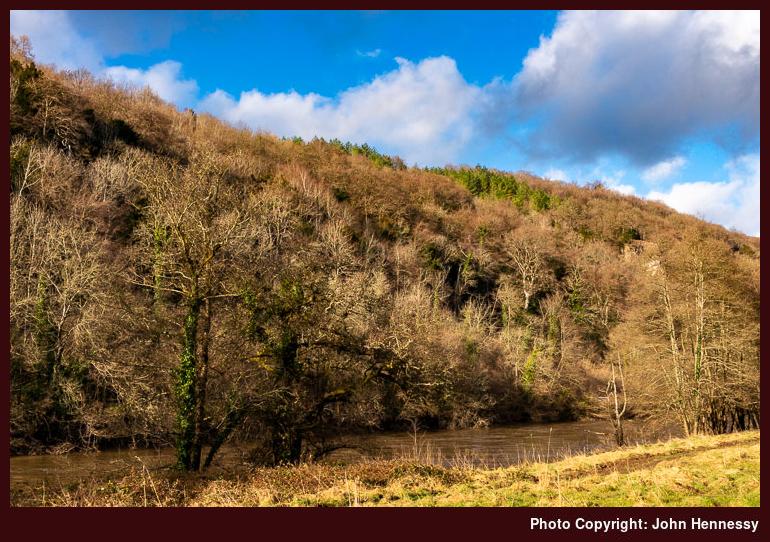
It was afternoon by the time that I reached the eastern part of Symonds Yat. Not only had the trail led me onto tarmac but I had crossed into England and was in Herefordshire. The road and any traffic that was passing along it was left behind to round Huntsham Hill and return through Elliot’s Wood. What became clear was how late in the afternoon it was getting so I was anxious to keep going and photographic efforts stopped.
After reaching a road again, I then left it to go through Mailscot Wood and into both Gloucestershire and part of the Forest of Dean. With the road to Christchurch never far away, I was lured along a trail nearly as far as Hillersland before I turned in the direction of the River Wye again. That felt longer than was ideal given how late it was in the shortness of a January day.
Soon enough though, I was back on the route of the Wye Valley Walk and heading towards Monmouth again. However, I decided against crossing the river until I reached the Wye Bridge in Monmouth, so following Route 423 of the National Cycle Network. By now I was back in Wales and soon enough reached a section of the railway that once connected Monmouth and Symonds Yat. That made navigation less of a concern as the hours of daylight faded.
Eventually, the gloaming would turn into full darkness and torch-lit walking along tarmac returned me to Monmouth, where I had plenty of time to find the bus terminus that I had not used on my arrival. Tintern was passed in darkness on the way home but that fact did nothing to spoil the satisfying day out. In fact, it remains a useful excuse for returning to a delightful part of Wales.
Travel Arrangements
Train journey from Macclesfield to Hereford with a change at Stockport, followed by bus travel from Hereford to Monmouth using service 36. Bus journey from Monmouth to Chepstow using service 69 followed by train travel from there back to Macclesfield with a change in Birmingham New Street.